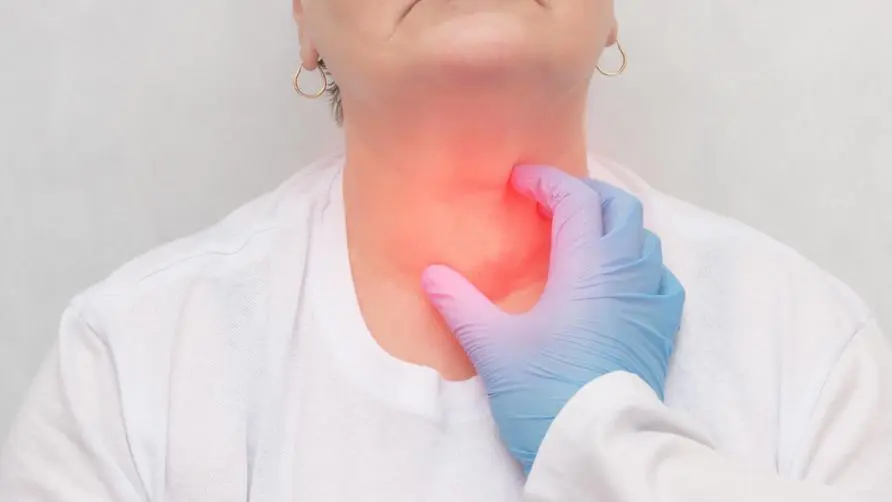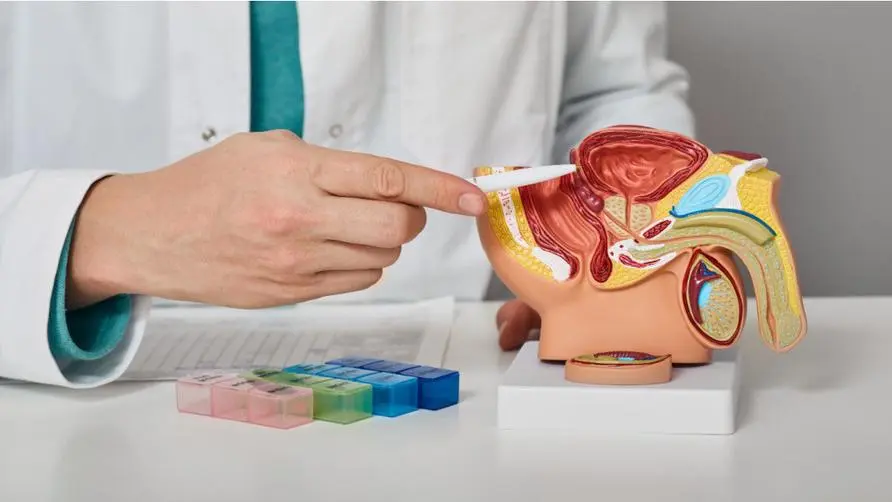Is the lump in my neck "can't be pushed" cancer? The dawn of precision treatment for thyroid cancer: the response rate of second-line targeted therapy exceeds 50%

Beware of the hard lump in your neck that “won’t move”! Thyroid cancer symptoms and check-up times
If you feel an abnormal “fixed” lump around your neck, should you be careful as it is a sign of thyroid cancer? According to the 2020 cancer registration data, thyroid ranks seventh among the top ten cancers and the fourth highest incidence rate of cancer in women. The incidence rate in women is three times higher than that in men. Taiwanese celebrities such as Li Mingyi and Bao Ma have discovered Thyroid cancer.
Wu Xiyuan, an attending physician at the General Surgery Department of the Tri-Service General Hospital, said that possible clinical symptoms of thyroid cancer include neck swelling, hoarseness, difficulty swallowing, swollen cervical lymph nodes, or neck pressure. However, thyroid cancer often has no obvious symptoms when it is small in size. When it causes the above symptoms, it has usually grown to a certain extent, or it is discovered accidentally when the patient undergoes relevant health examinations. Once an abnormal tumor appears around the neck and feels hard and immovable, you should seek medical examination for thyroid cancer as soon as possible.
In addition, thyroid cancer is related to heredity or family history. Dr. Wu Xiyuan pointed out that in the past, a male patient had a family history of goiter, which caused the thyroid gland to be covered with large and small nodules that occupied the entire neck. It increased rapidly. Although the fine-needle aspiration was benign, the surgical biopsy confirmed that it was thyroid cancer and had invaded the larynx. It could not be surgically removed immediately and needed to receive targeted therapy first. As long as thyroid nodules or thyroid cancer are found, regular follow-up visits must be made.
Thyroid cancer can also metastasize distantly! Current treatments for thyroid cancer
Dr. Wu Xiyuan said that there are three main types of thyroid cancer, 85% of which are “papillary thyroid cancer”, about 10% are “follicular thyroid cancer”, and 1% are “medulla thyroid cancer”. In addition, there are also a very small number of A more aggressive form of anaplastic thyroid cancer. Lymph node metastasis is more common in papillary thyroid cancer, while distant metastasis such as lung metastasis is more likely in follicular thyroid cancer.
Surgery is the first line of treatment for thyroid cancer. Dr. Wu Xiyuan pointed out that in addition to removing the tumor, surgery will also evaluate whether the thyroid cancer has lymphatic metastasis, and depending on whether there is metastasis, a decision will be made to perform a unilobal thyroidectomy or a total thyroidectomy. Resection may also require lymph node dissection. When there is lymphatic metastasis, extrathyroidal invasion or a higher-risk pathological pattern, adjuvant radioactive iodine therapy will be given. However, medullary carcinomas and undifferentiated carcinomas do not respond well to radioactive iodine therapy, so surgery and new targeted therapies are the main treatments.
Does thyroid cancer also require genetic testing? Targeted therapy response rate exceeds 50%
In recent years, thyroid cancer treatment has also entered the era of “precision therapy”. Dr. Wu Xiyuan pointed out that the pathogenesis of thyroid cancer is a series of processes, and its mechanism is controlled by many genes. Genes are like a series of genes in the body from upstream to downstream. “Switching the gate”, it is currently found that the gene most related to thyroid cancer is BRAF. BRAF gene mutations are not only related to the aggressiveness of thyroid cancer, but also a major breakthrough point for targeted therapy. In addition to the BRAF gene, RET, NTRK, TERT, RAS, TP53, etc. are all genes related to the thyroid cancer pathway. People generally consider that genetic testing is expensive. In addition to choosing a testing plan, you can consider BRAF, RET, NTRK and other genes most related to thyroid cancer. You can also consult a medical center or pathology laboratory to see if there is a test method for BRAF specimen staining as a gene test. Initial reference basis for testing.
Dr. Wu Xiyuan said that the main situations of interventional targeted therapy for thyroid cancer are: the first is when the cancer invades important structures and the risk of surgical resection is high. Targeted therapy can be used first to shrink the tumor; the second is when the cancer has already received standard treatment. For patients who relapse after surgical treatment and radioactive iodine treatment, if the original radioactive iodine is ineffective, targeted therapy will be performed, accounting for about 5-10%.
Dr. Wu Xiyuan further explained that among the targeted drugs currently available, the first line is “multi-targeted” targeted drugs, which target upstream receptors in the pathogenesis of thyroid cancer, including angiogenesis and fibroblast growth factors. Most of them are aimed at stabilizing the tumor or slowing down its spread. However, first-line targeted drugs often have severe side effects such as fatigue, diarrhea, loss of appetite, rash, and even cardiovascular and renal effects. Nowadays, there are second-line targeted drugs for advanced thyroid cancer with BRAF gene mutations. The treatment response rate is more than half, which can achieve tumor shrinkage and maintain good quality of life.
Dr. Wu Xiyuan took a 75-year-old patient he treated as an example. The patient was diagnosed with thyroid cancer more than 10 years ago and relapsed 5 years ago after traditional treatment. He had lymph node metastasis and radioactive iodine treatment was ineffective. He used first-line targeted drugs. Later, unbearable side effects occurred, and liver index increased. Because the tumor gene was found to have a BRAF mutation, dual-targeted drugs targeting the BRAF and MEK genes were subsequently used, which successfully inhibited tumor growth. After half a year of targeted treatment, the thyroglobulin level decreased significantly, and the quality of life also improved significantly. This is great news for thyroid cancer patients who have low tolerance for side effects of targeted drugs or who are older.
Can’t people with thyroid cancer eat iodine-containing foods? Regular follow-up and regular treatment are key
There are nearly 5,000 patients with thyroid cancer every year. How can we adjust our daily routine to achieve stable control? Dr. Wu Xiyuan pointed out that the rate of change of thyroid cancer varies from person to person, so regular follow-up is the most important key. It is generally believed that patients with thyroid cancer need a low-iodine diet, but in fact they only need to be controlled 2 weeks before receiving radioactive iodine treatment. Thyroid cancer patients still mainly eat a balanced diet and can consume more vegetables. Excessive lack of iodine intake may cause nutritional imbalance or metabolic abnormalities.
In addition, patients who undergo total thyroidectomy need to take oral thyroxine for life. Dr. Wu Xiyuan reminds that thyroxine drugs are mostly taken on an empty stomach in the morning. They must be separated by one hour from food, coffee, and tea to avoid affecting absorption. Patients must take the medicine regularly. During regular follow-up visits every three months, it is recommended to undergo blood drawing and ultrasound examination at the same time to understand whether there are abnormal changes in the tumor and to provide the most appropriate treatment in a timely manner.
Further reading:





